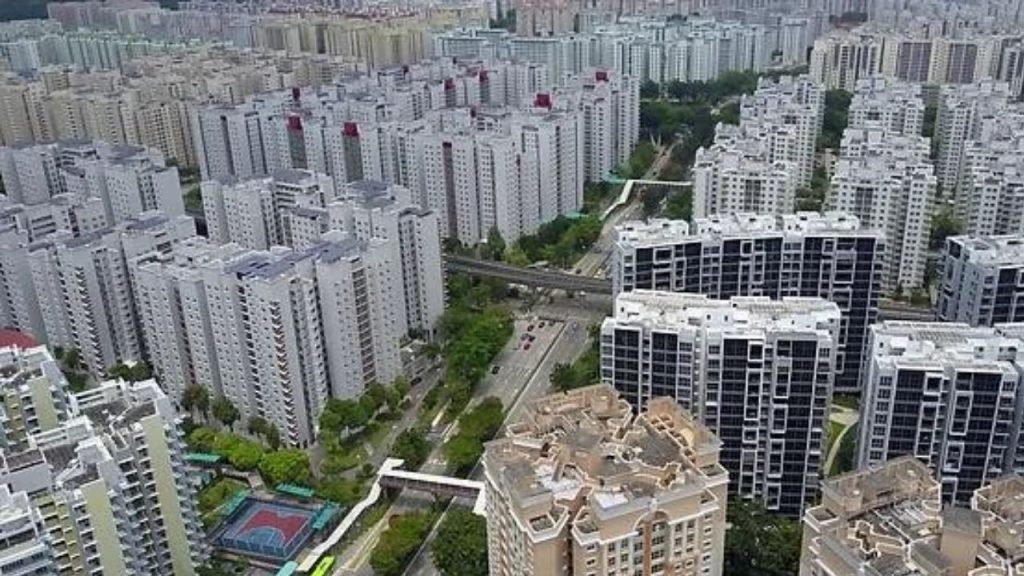Singapore is gearing up for a sweeping urban transformation that promises to reshape its cityscape for decades to come. The Urban Redevelopment Authority (URA) unveiled the Draft Master Plan 2025, which lays the foundation for a more vibrant, liveable, and future-ready nation. With planning guided by extensive public feedback from nearly 220,000 residents, this blueprint envisions a Singapore where homes, business districts, parks, and community infrastructure are seamlessly integrated into daily life.
The plan is anchored in four visionary themes: creating a happy and healthy city, driving sustainable economic growth, enhancing resilience against urban challenges, and preserving the rich tapestry of heritage and nature. It offers an ambitious yet grounded roadmap for the next 10 to 15 years, shaping how people will live, work, and connect across the island.
Table of Contents
Expanding Homes in the Heart of the City
A central element of the Draft Master Plan 2025 is a bold move to increase housing availability in prime central districts. Areas such as Newton, Paterson, and the Greater one-north region will be transformed with new neighbourhoods and high-density developments. In Newton, residents can expect a fresh residential zone near the MRT station, featuring mixed-use structures offering retail, food options, and homes near the vibrant Newton Circus.
Similarly, Paterson is slated to host a dynamic development directly atop Orchard MRT station. It will blend living spaces with retail and office offerings, delivering an integrated urban lifestyle. Meanwhile, the Greater one-north region will see new homes along Dover Road and Mediapolis, with recreational amenities and improved connectivity enhancing livability.
From Airbases to Neighbourhoods
The eastern part of Singapore will undergo significant redevelopment, starting with the Paya Lebar Air Base area. The adjacent Defu neighbourhood will pioneer this shift, incorporating cycling paths, enhanced transport, and office spaces. Redevelopment will also extend to major sites such as the Sembawang Shipyard (post-2028), the former Singapore Racecourse at Kranji, and the Greater Southern Waterfront where Keppel Terminal and Distripark will become new residential enclaves.
In total, over 80,000 new homes both public and private are expected across more than 10 upcoming housing areas. These new estates will cater to diverse demographics, offering modern amenities and seamless integration with transportation and community facilities.
Supporting Independent Ageing with Dignity and Comfort
Recognising Singapore’s ageing population, the draft plan includes extensive provisions for senior living. More neighbourhoods will feature assisted-living units and active ageing centres to enable elderly residents to lead independent and healthy lives. These public community care apartments will include on-site healthcare and social services, while private assisted-living flats will incorporate wellness-focused amenities. This commitment reflects a long-term social vision that supports residents not just with housing, but with care systems that align with the needs of an ageing society.
Green and Active Spaces for All to Enjoy

Singapore’s future will also be marked by a major expansion of parks, community hubs, and pedestrian paths. More than 25 parks and 50 km of park connectors are expected within five years. Additionally, over 100 hectares of land are being studied for potential conversion into green spaces. These upgrades will be complemented by a growing cycling network that will stretch across 1,300 km, encouraging active lifestyles and eco-friendly commuting.
Towns like Woodlands, Yio Chu Kang, and Sengkang will receive new integrated community hubs near major transport nodes. These facilities will feature sports complexes, healthcare services, and recreational venues all designed for easy access and maximum community benefit.
New Bridges and Future MRT Lines
Among the upcoming infrastructure highlights is a new pedestrian bridge linking Marina Centre with Bay East Garden, enabling smoother movement between city attractions and the East Coast. The transport system itself is set to evolve with two upcoming MRT lines under study the Tengah Line and the Seletar Line which will connect regions like Serangoon North, Sembawang, Woodlands, Whampoa, and the Greater Southern Waterfront. These transport initiatives underscore Singapore’s aim to decentralise access and encourage sustainable commuting across the island.
Breathing New Life into Commercial and Business Spaces
The Draft Master Plan 2025 also outlines a transformation of Singapore’s economic geography. Jurong, Tuas, and the Northern Gateway will feature new business-white zones with flexible industrial and commercial uses. These areas will be strategically located near major transport links and include sites for innovation, services, and logistics.
One major project is a multi-modal hub adjacent to the Johor Bahru-Singapore Rapid Transit System, integrating MRT and bus services. Bishan Town Centre will be revitalised with new healthcare, commercial, and office spaces. Government agencies are considering relocating to these zones, providing a stimulus for economic activity and job creation outside the traditional CBD.
Resilience in the Face of Future Challenges
Singapore’s planning future includes preparing for environmental and climate-related uncertainties. New data-driven tools for urban modelling are being developed in partnership with local universities. Plans are also advancing for Long Island, an ambitious land reclamation project to enhance flood and coastal protection while meeting land demand.
Underground spaces will be increasingly utilised, such as Gali Batu in Woodlands, which may store construction materials, freeing up surface land for other uses. These strategies underscore the city’s commitment to long-term resilience and resource optimisation.
Preserving History While Building Tomorrow
Amid all the new development, heritage remains a priority. Over 20 buildings are proposed for conservation, including the NatSteel Steel Pavilion and Bukit Timah Turf City’s iconic structures. Other notable sites, such as the former Pasir Panjang English School, will be integrated into modern housing developments.
The city’s identity will also be reinforced through enhancements to identity nodes like Siglap and Moonstone Lane Estate, and the introduction of pedestrian-friendly spaces in Katong’s heritage corridors. These efforts reflect the city’s respect for its past as it steps boldly into the future.
A Vision for a Connected, Inclusive, and Resilient Nation
Singapore’s Draft Master Plan 2025 presents more than just buildings and infrastructure—it reflects a bold vision for a thriving, inclusive, and adaptable society. Through strategic planning, community integration, environmental foresight, and cultural preservation, the nation is preparing for the challenges and opportunities of the next 10 to 15 years. As the plan moves from draft to implementation, residents can look forward to a Singapore that continues to lead the way in sustainable urban innovation while staying grounded in its unique identity.





I have an online voting work